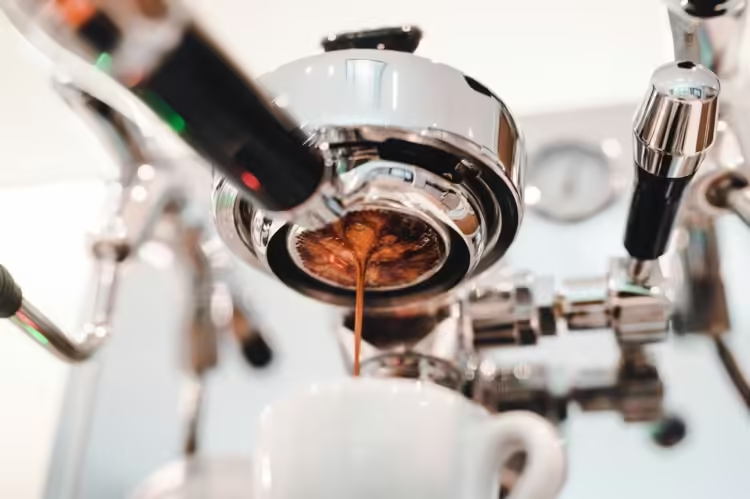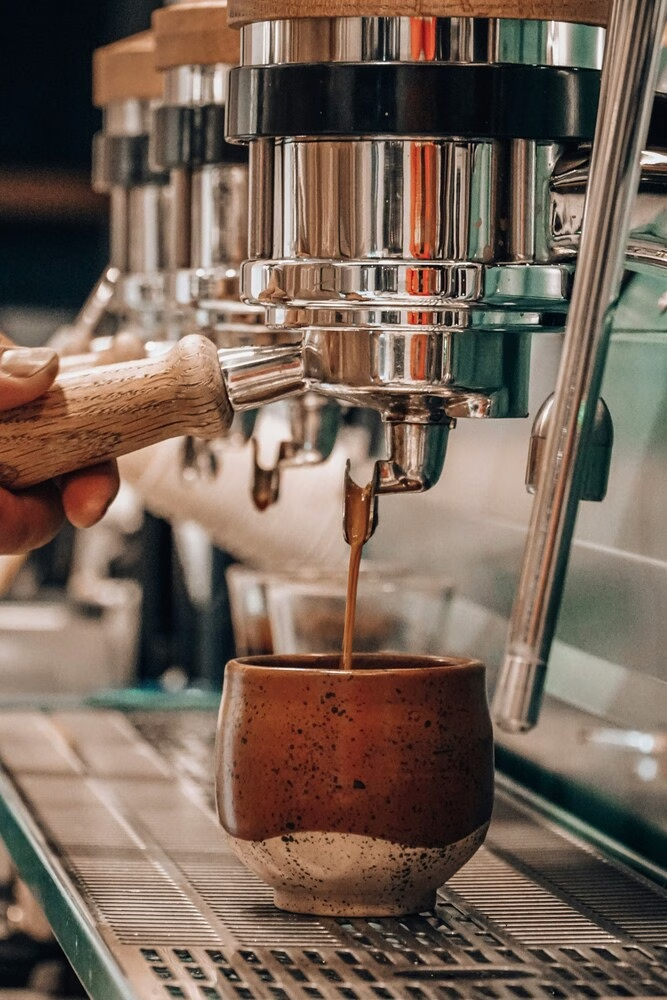

Researchers in Switzerland reveals the physics behind an espresso shot—and the way the primary few moments of a pull could make all of the distinction.
BY BHAVI PATEL
BARISTA MAGAZINE ONLINE
Featured picture by Charles Sims
Understanding espresso’s bodily construction has been like making an attempt to explain a symphony by analyzing particular person notes—till now. A groundbreaking examine by researchers from the College of Fribourg and the ZHAW Zurich College of Utilized Sciences reveals that espresso is way extra advanced than anybody imagined, current as an intricate colloidal system the place oil droplets, polymers, and proteins dance collectively to create the sensory expertise we cherish.
One key level that the examine confirms is that the primary few milliliters of an espresso shot make up the vast majority of its taste and texture: one thing that lots of you might already know—however in the present day, we discover the findings of the examine that show why this level is true.
The Hidden World Inside Your Cup


In accordance with the examine, “An espresso is a posh multiphase system containing dispersed solids, polymers, oil droplets, and a substantial quantity of fuel within the crema.” An espresso shot just isn’t simply espresso; it’s an engineering marvel occurring in real-time throughout extraction.
A daily espresso has a complete stable focus of roughly 50 mg/mL. In comparison with different extraction strategies, espresso, notably if brewed from Arabica espresso, additionally has an terribly excessive lipid content material of 1.2-2.5 mg/mL.
Utilizing superior imaging strategies, together with confocal laser scanning microscopy and small-angle X-ray scattering, researchers found that espresso incorporates submicron oil droplets stabilized by protein-polysaccharide complexes. These microscopic constructions, largely underneath 350 nanometers in dimension, are what carry these treasured lipophilic (oil-loving, therefore, oil-soluble) taste compounds to your palate.
The examine finds that these oil droplets are stabilized by protein-based constructions that type protecting layers round every droplet, stopping them from merging and sustaining espresso’s attribute texture. Consider it as hundreds of tiny taste packages, every wrapped in its personal protecting coating.
The First Shot Issues Most
Right here is the place issues get fascinating for professionals pulling pictures: Timing is all the things. The analysis analyzed espresso in three fractions—early, mid, and late—revealing dramatic variations in construction.
The researchers discovered that largely the primary fraction of the espresso contributes to the ‘physique’ of espresso on account of its highest focus of dispersed colloids and the early extraction of unfolded polymers. The examine finds, “The dimension of the extracted oil droplets steadily decreases from the early to the later fractions, possible as a result of smaller oil droplets are subjected to extra floor interactions and elute extra slowly from the porous espresso mattress”.
That preliminary portion is not simply stronger—it is structurally completely different, containing longer, unfolded polymer chains that create viscosity and mouthfeel.
Polymers: The Unsung Heroes
The researchers recognized inflexible, fiber-like polymer constructions—arabinogalactans and galactomannans extracted from espresso cell partitions—measuring roughly 40 nanometers in size with a radius of simply 0.6 nanometers. These molecular scaffolds create entanglements with oil droplets and unfolded chains, constructing the three-dimensional construction that provides espresso its physique.
The examine notes that melanoidins, these advanced compounds fashioned because of the Maillard response throughout roasting, play a twin function: stabilizing each the liquid emulsion and the crema foam. They are primarily molecular multitaskers, lowering interfacial rigidity whereas offering electrostatic stabilization. These polymer and emulsion constructions are important for the mouthfeel and taste launch properties of the espresso.
Sensible Implications for Espresso Professionals



This analysis holds the potential to revolutionize our understanding of espresso extraction. The examine confirms that smaller oil droplets elute later on account of elevated floor interactions with the espresso puck. This implies grind dimension, strain, and movement price are not simply affecting extraction yield—they are figuring out the bodily structure of your beverage.
The damaging cost on espresso colloids (roughly -30 mV at regular brewing pH) supplies electrostatic repulsion, stopping aggregation. When the examine adjusted the pH to 2, the espresso turned cloudy, resembling the looks of espresso containing milk, proving that cost stabilization is vital.
For baristas centered on consistency and high quality, this analysis confirms what many have intuited: These first treasured milliliters include the concentrated essence of espresso’s texture and complexity—a liquid achievement of nanoscale engineering.
ABOUT THE AUTHOR
Bhavi Patel is a meals author specializing in espresso and tea, and a brand-building specialist with a background in dairy know-how and an curiosity in culinary historical past and sensory notion of meals.
Subscribe and Extra!
As at all times, you may learn Barista Journal in paper by subscribing or ordering a difficulty.
Learn the October + November 2025 Situation without spending a dime with our digital version.
Totally free entry to greater than 5 years’ value of points, go to our digital version archives right here.



